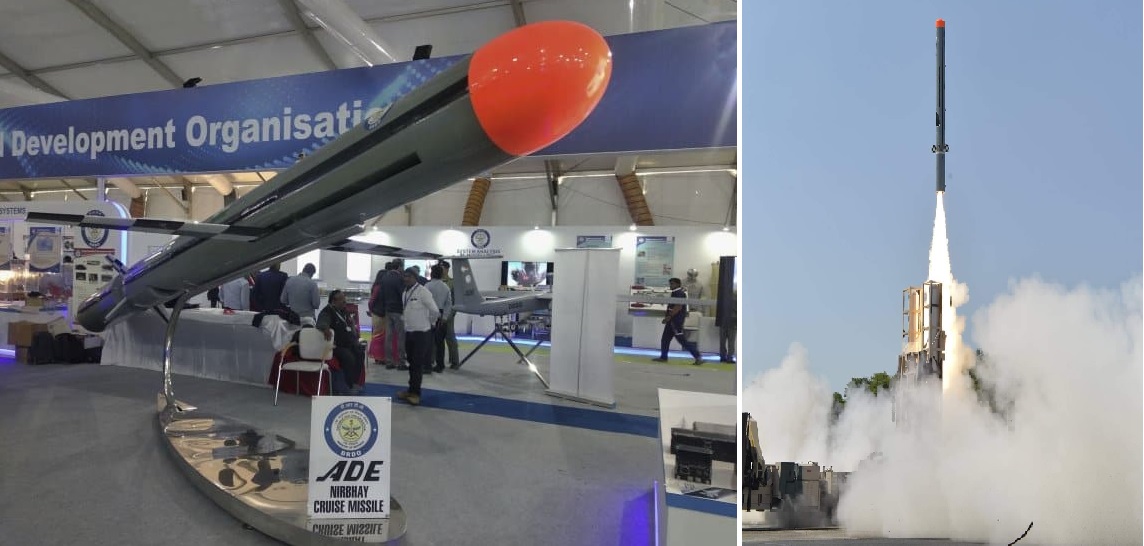India’s DRDO Gears Up for Maiden Launch of Nirbhay Long-Range Cruise Missile for IAF in 2024

India’s Defence Research and Development Organisation (DRDO) is preparing for a landmark event this year: the maiden launch of the Nirbhay Long-Range Land Attack Cruise Missile (LACM) for the Indian Air Force (IAF). This moment represents a major leap in the country’s indigenous missile development capabilities, reflecting India's growing focus on self-reliance in defense technology.
The Nirbhay missile is a cutting-edge subsonic cruise missile, designed to be a highly versatile weapon system. Developed by the Aeronautical Development Establishment (ADE), a branch of DRDO, Nirbhay boasts an impressive range of up to 1,000 kilometers. It is capable of delivering both conventional and nuclear payloads, giving it a key role in strengthening India's strategic deterrence.
One of the key features of the Nirbhay missile is its all-weather, long-range capability, allowing it to strike deep into enemy territory under any conditions. The missile is highly adaptable, capable of being launched from land, sea, or air, giving India a flexible weapon that can be deployed in various combat scenarios. This versatility is enhanced by the ongoing development of different versions of the missile, including air-launched and submarine-launched variants.
Nirbhay’s precision is also one of its most valuable assets. After a series of six developmental trials, the missile has demonstrated a single-shot kill probability of over 90%. This high accuracy, combined with its long range and ability to carry multiple types of warheads, makes it an ideal tool for both tactical strikes and strategic missions.
The missile’s design includes advanced guidance systems with inertial navigation and satellite-based corrections, ensuring it stays on course even during long-distance strikes. Nirbhay can fly at subsonic speeds—around Mach 0.7—using a terrain-hugging flight profile to avoid detection by enemy radar systems, enhancing its stealth characteristics. Additionally, the missile’s onboard systems allow it to adjust its flight path mid-air to avoid obstacles, giving it a sophisticated level of maneuverability.
With the Indian military's need for increased long-range precision strike capabilities, the operationalization of the Nirbhay missile is seen as a critical step. Its deployment with the IAF will significantly enhance India’s ability to conduct deep-strike missions, both in conventional warfare and as part of its nuclear deterrence strategy. The missile is expected to play a pivotal role in defending the country's borders, especially in high-stakes scenarios where long-range precision is essential.
DRDO's success in the development and planned launch of Nirbhay also fits into India's broader military modernization efforts. The nation has been steadily increasing its focus on indigenously produced military hardware, aiming to reduce reliance on foreign suppliers and enhance its self-sufficiency in defense production.
In addition to the land-launched version being prepared for the IAF, DRDO is working on several other variants. The air-launched version, which could be fired from Indian fighter jets, offers even greater flexibility in strike operations. Meanwhile, the ship-launched and submarine-launched variants, which are currently undergoing trials, would provide India with the ability to launch the missile from sea platforms, enhancing the country’s naval strike capabilities.
The launch of the Nirbhay missile for the IAF is expected to be a major step forward, cementing India's position as a regional power with advanced cruise missile technology. This development not only boosts India’s defense capabilities but also sends a strong message to adversaries in the region about the nation’s growing military prowess.


